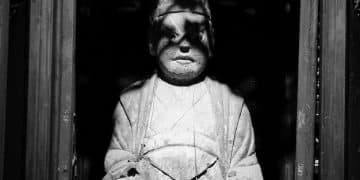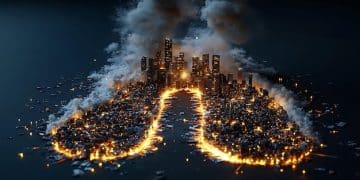Unleashing Tension: The Power of Location Shooting in ‘The Wages of Fear’
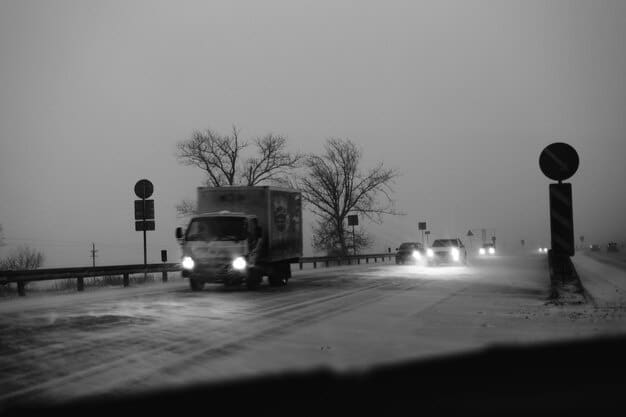
‘The Wages of Fear’ (1953) masterfully utilizes the power of location shooting to amplify the film’s tension. By filming in authentic, remote locations, director Henri-Georges Clouzot immerses viewers in the characters’ grueling journey, making their fear and desperation palpable.
The use of location shooting can dramatically impact a film’s atmosphere and its ability to connect with audiences. Few films demonstrate this more powerfully than Henri-Georges Clouzot’s 1953 thriller, ‘The Power of Location Shooting: How ‘The Wages of Fear’ (1953) Created Unparalleled Tension’. By venturing far beyond the confines of a studio, Clouzot was able to craft a cinematic experience that is as visceral as it is unforgettable. The film’s remote setting isn’t just a backdrop; it’s a character, shaping the narrative and amplifying the stakes at every turn.
The Harsh Reality of Las Piedras
To understand the impact of location shooting on ‘The Wages of Fear’, it’s important to understand the setting. Las Piedras, a desolate, fictional town in South America, is where the film begins. This isn’t a place of vibrant culture or opportunity. It’s a dead end, a place where men are trapped, desperate for any chance of escape.
Creating a Sense of Isolation
Clouzot meticulously chose locations that would emphasize this isolation. The barren landscapes, the dusty roads, and the ramshackle buildings all contribute to a feeling of hopelessness. The viewer feels as trapped as the characters, heightening the tension and making their decisions feel all the more critical.
Authenticity Through Environment
The setting of Las Piedras feels real. It isn’t a Hollywood set; it’s a tangible place with a palpable atmosphere. This authenticity lends the film a sense of gritty realism. The hardships faced by the characters feel earned, and their desperation is something the audience can believe and invest in. The power of location shooting shines through, creating a truly immersive experience.
- Visual Depiction of Poverty: The visuals of Las Piedras scream despair and lost hope, a stark contrast to typical glamorous film settings.
- Geographical Isolation: The remote location makes escape seem impossible, increasing the stakes.
- Psychological Impact of Setting: The environment directly influences the character’s mental states, amplifying anxiety and desperation.
Through carefully selected locations, Clouzot paints a vivid picture of a town on the brink. This backdrop isn’t just scenery; it’s a crucial element in the film’s narrative, contributing significantly to the pervasive sense of dread. The location itself is a key component of ‘The Power of Location Shooting: How ‘The Wages of Fear’ (1953) Created Unparalleled Tension’.
Nitroglycerin on the Road: A Journey Through Peril
The central plot of ‘The Wages of Fear’ revolves around the transportation of nitroglycerin across treacherous terrain. This journey is inherently dangerous, but the chosen locations elevate the danger to new heights. Every bump in the road, every rock, every puddle becomes a potential catalyst for disaster.
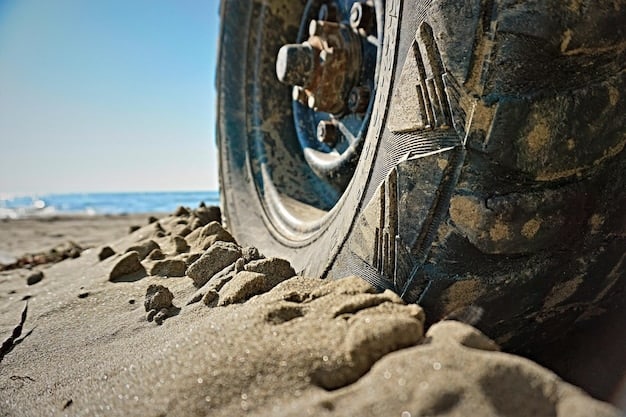
Amplifying the Stakes
The winding mountain roads and the rickety bridges aren’t just obstacles; they’re active threats. They emphasize the fragility of the nitroglycerin and the vulnerability of the drivers. Each mile traveled is a gamble, and the audience is constantly reminded of the potential consequences.
Realism in Every Frame
Shooting on real roads, with real dangers, adds an undeniable layer of realism to the film. This contrasts sharply with studio-bound productions, where dangers can be faked or minimized. In ‘The Wages of Fear’, the danger is real, and the audience feels it.
- Visual Tension: Each frame captures the precariousness of the journey, making viewers constantly aware of the potential for disaster.
- Environmental Hazards: The harsh environment introduces unpredictable events, heightening the film’s suspense.
- Character Vulnerability: The landscape strips the characters of any control, leaving them at the mercy of their environment.
The journey itself, filmed in these harsh locations, becomes a test of courage and endurance. It is a testament to ‘The Power of Location Shooting: How ‘The Wages of Fear’ (1953) Created Unparalleled Tension’, demonstrating how the environment can be used to amplify the stakes and create a truly unforgettable cinematic experience. This section of the film is fraught with danger that feels all too real.
The Psychological Impact of the Landscape
The setting of ‘The Wages of Fear’ not only creates physical challenges but also has a profound psychological impact on the characters. The isolation, the desperation, and the constant threat of death all contribute to their deteriorating mental states.
Fear and Paranoia
The vast, unforgiving landscape serves as a constant reminder of their vulnerability. This breeds fear and paranoia, making the characters distrustful of each other and prone to rash decisions. The environment itself becomes a weapon, chipping away at their sanity.
Desperation and Loss of Hope
Seeing no easy way out, the characters grapple with despair. The bleak setting amplifies these feelings, suggesting that no escape is truly possible. The surroundings inflict a mental toll that is just as damaging as any physical hardship.
The landscape and the dangers it presents have a visible effect on the characters. This mental deterioration, fueled by the location, becomes a crucial part of the film’s narrative. ‘The Wages of Fear’ uses ‘The Power of Location Shooting: How ‘The Wages of Fear’ (1953) Created Unparalleled Tension’ to show how an environment can break a person down, leading to desperate and often tragic choices.
Contrasting Studio Sets and Real Locations
The decision to film ‘The Wages of Fear’ on location, rather than in a studio, was a pivotal one. It allowed Clouzot to achieve a level of realism and intensity that would have been impossible otherwise. The comparison between studio sets and real locations highlights this difference.
Authenticity vs. Artifice
Studio sets, while offering control and convenience, often lack the authenticity of real locations. They can feel artificial, distancing the viewer from the story. Location shooting, on the other hand, immerses the audience in the world of the film, making the experience more visceral and believable.
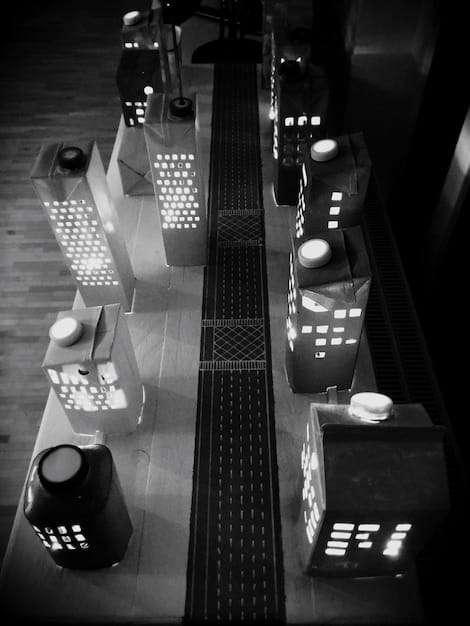
The Unpredictability Factor
Filming on location introduces an element of unpredictability. Weather conditions, unexpected obstacles, and the sheer difficulty of working in remote areas can all add to the challenge. However, these challenges often translate into added realism and intensity on screen.
- Enhanced Realism: Real locations contribute significantly to the film’s overall authenticity and believability.
- Increased Production Challenges: Filming on location introduces unpredictability and logistical difficulties.
- Artistic Gains: Overcoming these challenges often leads to a more powerful and impactful final product.
Clouzot’s choice to embrace the challenges of location shooting ultimately paid off. It elevated ‘The Wages of Fear’ from a simple thriller to a cinematic masterpiece. ‘The Power of Location Shooting: How ‘The Wages of Fear’ (1953) Created Unparalleled Tension’ is evident in every frame, showcasing the distinct advantages of filming in real-world environments. The commitment to authenticity significantly enhances the film’s gripping narrative.
Clouzot’s Vision and Execution
Henri-Georges Clouzot wasn’t just a director; he was a visionary who understood the importance of every element in his films. His meticulous attention to detail, combined with his willingness to take risks, made ‘The Wages of Fear’ a truly exceptional work.
Demanding Authenticity
Clouzot wasn’t content with merely telling a story; he wanted to create an experience. He demanded authenticity from his actors, his crew, and, most importantly, his locations. This commitment to realism is what sets ‘The Wages of Fear’ apart.
Masterful Storytelling
Clouzot used the location not just as a backdrop but as an integral part of the storytelling process. The environment shapes the plot, influences the characters, and ultimately drives the narrative forward. He wove location shooting into the very fabric of the film.
Clouzot’s vision was clear: to create a film that felt real, dangerous, and unforgettable. He achieved this through a combination of masterful storytelling and a deep understanding of ‘The Power of Location Shooting: How ‘The Wages of Fear’ (1953) Created Unparalleled Tension’. His direction ensured the location was not just seen but felt by every member of the audience. This makes the movie an enduring testament to the power of place in film.
Lasting Impact and Influence
Decades after its release, ‘The Wages of Fear’ continues to influence filmmakers and captivate audiences. Its innovative use of location shooting and its unflinching portrayal of human desperation remain powerful and relevant today.
A Benchmark for Thrillers
The film set a new standard for thriller filmmaking, demonstrating how atmosphere and tension can be amplified through carefully chosen locations. It serves as a reminder that the environment can be just as important as the plot or the characters.
Inspiration for Future Generations
‘The Wages of Fear’ has inspired countless filmmakers, encouraging them to embrace the challenges and reap the rewards of location shooting. Its influence can be seen in many contemporary thrillers that prioritize realism and immersion. Clouzot’s movie truly shows ‘The Power of Location Shooting: How ‘The Wages of Fear’ (1953) Created Unparalleled Tension’ extends beyond the screen, deeply impacting the genre itself and inspiring generations of filmmakers and viewers alike to appreciate the artistry of blending setting and story.
| Key Point | Brief Description |
|---|---|
| 🌍 Harsh Environment | The remote setting amplifies tension. |
| 💥 Nitroglycerin Transport | Each bump intensifies the danger. |
| 🧠 Psychological Impact | Characters face paranoia and despair. |
Frequently Asked Questions
The location shooting enhances realism and tension by placing the characters in a truly harsh environment. This amplifies the audience’s sense of danger and vulnerability.
The isolated and unforgiving environment leads to desperation and paranoia, influencing the characters’ decisions and creating conflict.
The real locations added an unmatched level of authenticity. Studio sets could not replicate the fear instilled by the natural challenges the characters faced.
Filming on location can present many difficulties, including unpredictable weather, logistical problems, and the need to adapt to unfamiliar environments.
Clouzot’s careful location choices drove the narrative, shaping the plot and character actions while amplifying the film’s overall sense of dread and suspense.
Conclusion
‘The Wages of Fear’ stands as a powerful example of how location shooting can elevate a film from a simple thriller to a truly unforgettable cinematic experience. ‘The Power of Location Shooting: How ‘The Wages of Fear’ (1953) Created Unparalleled Tension’ is undeniable, as the film leverages its environment to amplify the tension, develop its characters, and ultimately, deliver a truly gripping story.
